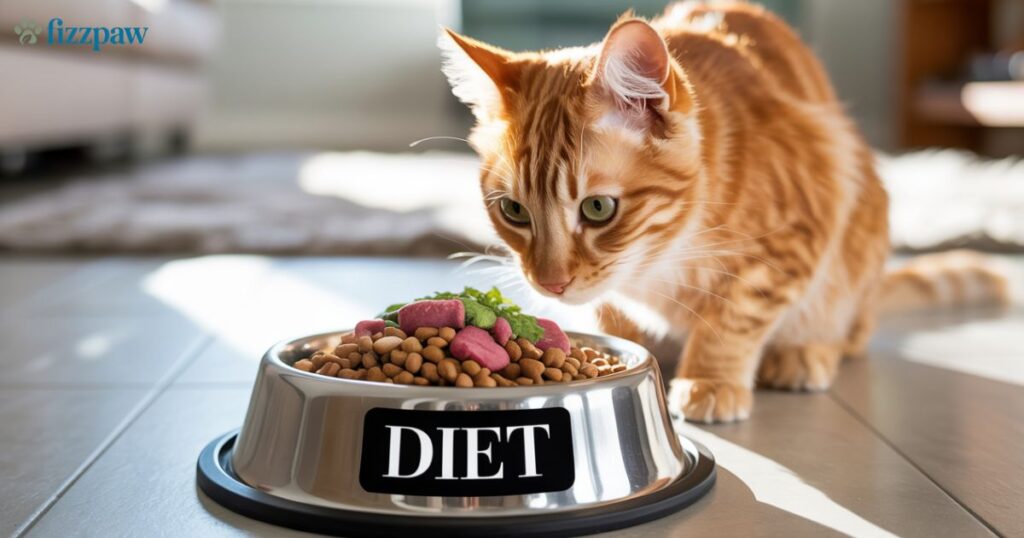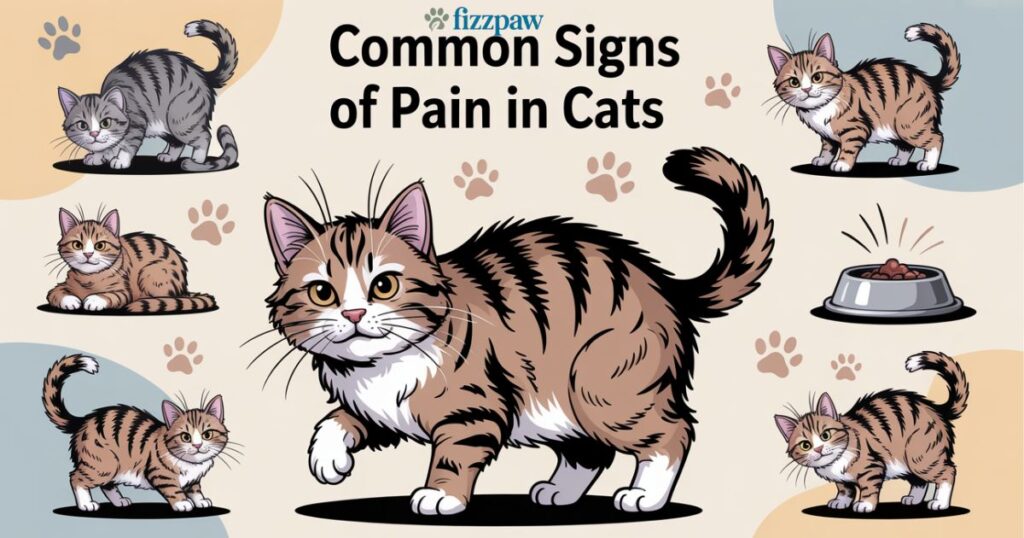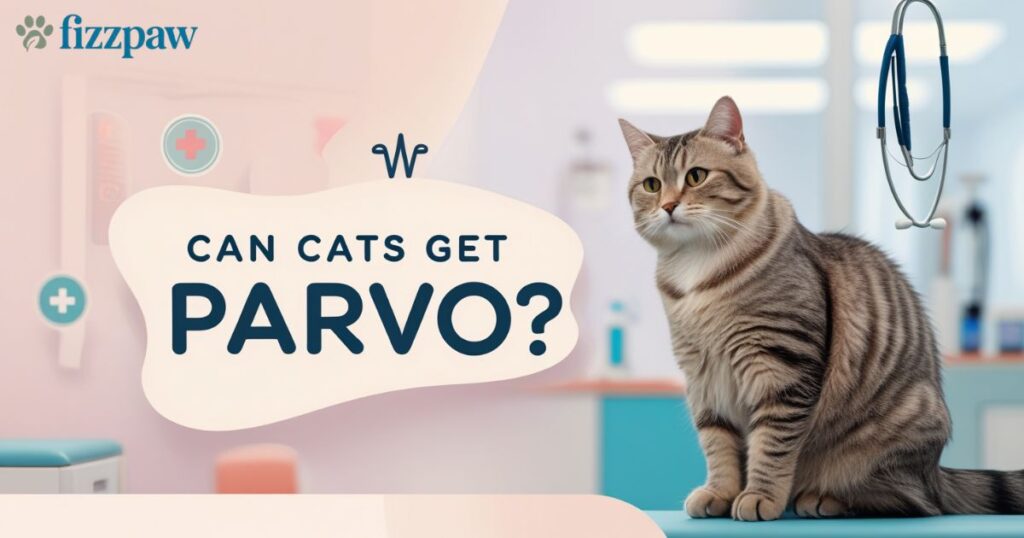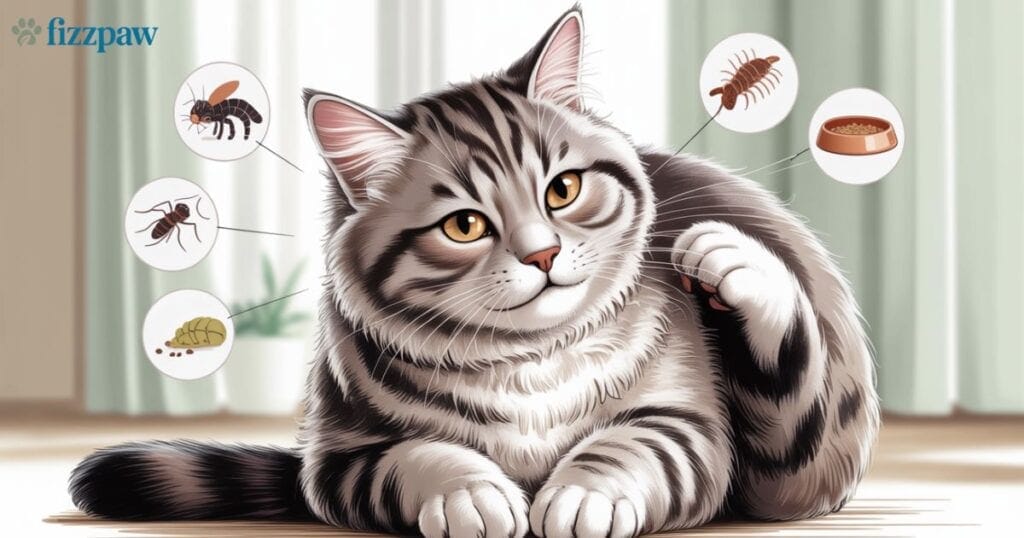Cats often hide their pain, so it can be hard to tell when they’re hurting. Just like people, cats can feel pain, swelling, and injuries too. The natural pain relief for cats is a more secure, more gentle method of helping to heal without the use of powerful medications.
These methods are natural and can alleviate discomfort caused by arthritis in felines and post-surgery soreness and minor injuries. If you’re looking for cat inflammation cures or searching for solutions at home for feline pain, it’s crucial to choose remedies that are safe for pets and effective.
From diet modifications or herbal solutions to natural pain relief for cats and managing cat pain at home, this guide covers all you require to know to help your cat be more comfortable, move better, and enjoy a comfortable lifestyle.
How to Tell if Your Cat Is in Pain (Even If They Hide It Well)
Cats often suffer in silence. How can I tell if my cat is feeling pain? Look for changes in their normal behavior. They might stop cleaning themselves, hide away, or avoid jumping like they used to. These are cat pain symptoms. Other signs include sleeping too much, not eating, or acting angry when touched. These signs may seem small, but they show discomfort.
Sometimes, a cat will limp or move stiffly. These are signs of cat discomfort that shouldn’t be ignored. Cat grooming and pain are connected. If your cat stops grooming itself, it could be a sign that it’s hurting. Also, check their eyes, breathing, and reactions to touch. Sudden changes often mean your cat is hurting. You need to act early and consider natural pain relief for cats to ease their discomfort gently and safely.
Why You Should Never Give Human Painkillers to Cats
Many people ask, Why can’t cats take NSAIDs like humans do? The answer is simple: human drugs can poison cats. Medications like ibuprofen and acetaminophen can be harmful to pets and should never be given to them. Even a small dose can damage their liver or kidneys. Giving your cat a human pill is risky and can even be deadly.
Pain relief without NSAIDs is safer and better for long-term use. Cats process medicine differently from humans. Their small bodies and fast systems can’t break down many chemicals. It’s important to only use pet-safe CBD oil or other remedies made just for cats. Always ask your vet before giving any medicine.
Pain relief for cats approaches may differ depending on your cat’s coat type — learn more about short, medium, and long-haired cats in our detailed hair length chart.
When to See a Vet First: The Golden Rule of Natural Treatment
When to see a vet for cat pain is something every pet owner should know. If your cat has serious symptoms—like constant limping, crying, or shaking—it’s time to go to the vet. Veterinary pain treatment for cats includes exams and tests to find the real cause of pain.
Sometimes natural treatments aren’t enough. A vet can confirm if your cat has feline arthritis pain, nerve damage, or an injury. Never skip a check-up if the pain is sudden or gets worse. A mix of medical care and managing cat pain naturally without medicine can work well when done right.
| Natural Remedy | Pain Relief Effectiveness (1–10) | Ease of Use (1–10) | Vet Approval Level (1–10) |
| Pet-safe CBD Oil | 8 | 7 | 7 |
| Turmeric (Curcumin) | 6 | 6 | 5 |
| Omega-3 Fish Oil | 7 | 8 | 8 |
| Glucosamine & Chondroitin | 7 | 7 | 8 |
| Herbal Remedies (Arnica, etc) | 5 | 5 | 4 |
| Acupressure & Massage | 6 | 6 | 6 |
Best Natural Pain Medicines for Cats (With Vet-Backed Evidence)

There are several proven options for natural remedies to relieve cat pain. One is pet-safe CBD oil, which can ease anxiety, reduce inflammation, and help with sleep. Vets recommend using it in small doses and checking the product label for cat safety.
Another option is turmeric, known for its strong anti-inflammatory effects. But can turmeric help cats with arthritis? Yes, in the right amount. It should be given with care because large doses can upset a cat’s stomach. It’s best to talk with a vet about the right CBD oil dose for your cat and to explore other natural pain relief options.
Herbal & Homeopathic Remedies for Cat Pain
Many home remedies for feline pain come from herbs. Arnica, devil’s claw, and boswellia are gentle herbs that may ease muscle pain and swelling. These herbs must be used in tiny amounts. They can be made into drops or powders mixed with food.
Natural Pain Relief for Cats through homeopathy uses tiny amounts of natural ingredients chosen to match your cat’s symptoms and help them heal. Some owners say it helps, but not all vets agree. Always watch for side effects and talk to a professional. This approach works well for cat pain behavior changes and minor aches.
Natural Anti-Inflammatory Diet for Pain Relief

Food plays a huge role in healing. Natural anti-inflammatory for cats can start with meals. Fish such as salmon and sardines are good for cats because they provide healthy omega-3 fatty acids.
These fatty acids help reduce swelling and support joints.
You can also try bone broth, pumpkin, and green veggies. A table can show helpful foods:
| Anti-Inflammatory Foods | Benefits |
| Sardines | Fish oil benefits for cats with inflammation |
| Pumpkin | Helps with digestion |
| Bone Broth | Supports joint health |
| Green Veggies | Rich in antioxidants |
A healthy diet is especially important for overweight cats dealing with joint pain to help reduce stress on their joints. Weight adds stress to joints, so feeding the right food matters. It helps reduce pain naturally.
Acupressure, Massage & Gentle Movement
Touch therapy can do wonders. Gentle cat cold and heat therapy, like warm compresses, can soothe sore spots. Massage boosts blood flow and helps stiff muscles feel better.This is especially helpful for older cats suffering from joint pain or arthritis.
Cat exercise for joint health is important too. Short walks or playing with a wand toy get them moving. If they stay still too long, joints become stiff. Moving keeps them loose and happy. Vets often suggest this, along with joint supplements for cats.
How to Create a Comfortable, Pain-Free Space for Your Cat at Home
Changing your cat’s home can help a lot. Add soft blankets, heated beds, and small ramps to make moving easier. Hard floors hurt sore paws. Soft rugs or carpets are better. Avoid tall jumps; use steps instead. These changes ease cat weight and joint pain.
Don’t forget emotional comfort. Use pheromone diffusers for stressed cats. Keep noise low. A calm space helps reduce cat anxiety and pain. A warm, quiet corner with soft light can help your cat feel safe and relaxed.
Monitoring Your Cat’s Progress & Adjusting Naturally
Tracking changes helps you see what works. Write down meals, movements, and mood. Is your cat grooming again? Eating well? These are good signs. If pain returns, change the remedy or dose. Keep asking, what home treatments help cat injuries?
If the pain worsens or new symptoms appear, talk to your vet. Natural treatments work slowly. Give it time, but be alert. Always think about how to improve cat pain management at home.
For gentle grooming techniques that complement natural pain relief, check out our vet-backed guide to safe cat grooming.
Final Thoughts: Blending Nature and Veterinary Science
The best results come from both worlds. Use safe supplements for cats with joint pain, good food, and healing touch. But don’t skip vet visits. Nature and science together give your cat the best chance.
Healing takes time. Stay patient and loving. With the right care, your cat can live pain-free and happily. Trust your gut, learn the signs, and keep helping your furry friend every day.
FAQs
Q: What can you give a cat for pain at home?
A: You can offer safe options like warm compresses or gentle massage, but always consult a vet before giving any medication.
Q: How do you comfort a cat in pain?
A: Provide a quiet, cozy space with soft bedding and gentle petting to help soothe and calm your cat.
Q: What can I use instead of paracetamol for cats?
A: Never give paracetamol to cats; instead, only use vet-prescribed pain relief like meloxicam or other safe alternatives.
Q: What can I give my cat for a toothache?
A: Dental pain requires a vet visit; meanwhile, soft food and maintaining oral hygiene can ease discomfort.
Q: How can I help my hurt cat?
A: Keep your cat calm, limit movement, and take them to the vet immediately for proper diagnosis and treatment.
Q: Can cats have paracetamol?
A: No, paracetamol is toxic to cats and should never be given under any circumstances.




